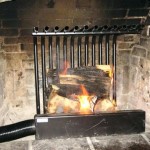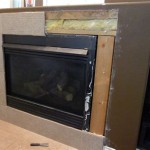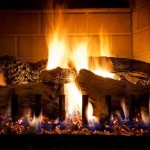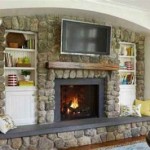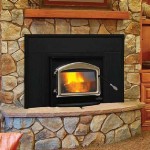The Enduring Appeal of the Red Brick Fireplace
The red brick fireplace has long been a fixture in homes, representing warmth, comfort, and a touch of classic architectural appeal. Its enduring popularity stems from a combination of aesthetic qualities, durable materials, and adaptability to various interior design styles. From rustic farmhouses to modern lofts, the red brick fireplace can serve as a focal point, adding character and value to a living space.
The term "red brick fireplace" encompasses a broad range of designs and constructions, typically referring to a fireplace built primarily, or faced entirely, with red-colored bricks. The shade of red can vary significantly, from a deep, earthy terracotta to a brighter, more vibrant hue. This variation is influenced by the type of clay used in the brick manufacturing process and the firing temperature. Furthermore, the texture of the brick, ranging from smooth and consistent to rough and weathered, contributes to the overall aesthetic. The red brick fireplace can stand alone as a design element or be incorporated into a larger brick wall, creating a cohesive and visually striking feature.
The popularity of red brick fireplaces is deeply rooted in history. Brick, as a building material, has been employed for centuries, prized for its fire resistance, strength, and availability. Early fireplaces were often constructed from locally sourced materials, with red clay being a common resource in many regions. As a result, red brick fireplaces became a natural and practical choice for heating homes and providing a central gathering place. This historical connection contributes to the nostalgic and comforting associations often linked to red brick fireplaces.
Beyond its historical significance, the red brick fireplace offers a number of practical advantages. Brick is a naturally fire-resistant material, providing a safe and reliable enclosure for a fire. This inherent fire resistance also translates to increased safety for the surrounding structure. Furthermore, brick's thermal mass properties allow it to absorb and retain heat, gradually releasing it into the room. This radiant heat provides a consistent and comfortable warmth, making the red brick fireplace an efficient heating option. The durability of brick is another significant benefit, ensuring that the fireplace will stand the test of time with proper maintenance.
Aesthetic Versatility and Design Integration
One of the key reasons for the ongoing popularity of red brick fireplaces is their aesthetic versatility. They can be seamlessly integrated into a wide range of design styles, from traditional to contemporary. In a traditional setting, a red brick fireplace can enhance the rustic charm and create a cozy atmosphere. When paired with a wooden mantelpiece, antique furniture, and warm lighting, it evokes a sense of heritage and comfort.
In more modern spaces, a red brick fireplace can provide a striking contrast to sleek lines and minimalist décor. The textured surface of the brick adds depth and visual interest, preventing the space from feeling sterile or impersonal. A simple, clean mantelpiece or no mantelpiece at all can further emphasize the modern aesthetic. Choosing a darker shade of red brick or painting the brick a neutral color can also help to integrate the fireplace into a contemporary setting.
The design possibilities are further expanded by the variety of ways in which the brick can be laid. A traditional running bond pattern provides a classic and timeless look, while a herringbone pattern adds a touch of sophistication and visual complexity. Stacked bond and other less common patterns can also be used to create a unique and personalized design. The size and shape of the bricks themselves can also be varied to achieve different aesthetic effects. Longer, thinner bricks can create a more modern and streamlined look, while larger, more rustic bricks enhance the traditional charm.
Furthermore, the surrounding décor can greatly influence the overall aesthetic of the red brick fireplace. Incorporating natural elements, such as wood, stone, and plants, can enhance the fireplace's organic appeal. Metal accents, such as iron fireplace tools or a copper screen, can add a touch of industrial chic. The color palette of the room is also an important consideration. Warm colors, such as browns, oranges, and yellows, complement the red brick and create a cozy and inviting atmosphere. Cooler colors, such as blues and greens, can provide a refreshing contrast and create a more modern and sophisticated look.
Considerations for Installation and Maintenance
The installation of a red brick fireplace requires careful planning and execution. It is essential to consult with qualified professionals to ensure that the fireplace is properly constructed and meets all relevant safety codes. The foundation of the fireplace must be strong and stable to support the weight of the brick. The chimney must be properly designed and constructed to ensure adequate ventilation and prevent the buildup of dangerous gases. The fireplace opening must be sized appropriately to accommodate the fire and prevent smoke from entering the room.
The process typically involves laying the bricks in a specific pattern, using mortar to bind them together. The mortar must be of the correct consistency and applied evenly to ensure a strong and durable bond. Special attention must be paid to the joints between the bricks to prevent cracks and leaks. The chimney flue must be lined with a fire-resistant material, such as clay tiles or stainless steel, to protect the chimney from the intense heat of the fire. The hearth, the area in front of the fireplace, must be made of a non-combustible material, such as brick, stone, or tile, to protect the floor from sparks and embers.
Once installed, a red brick fireplace requires regular maintenance to ensure safe and efficient operation. The chimney should be inspected and cleaned annually to remove creosote buildup, which is a flammable substance that can cause chimney fires. The fireplace should also be inspected for cracks and leaks, which can compromise its structural integrity and allow dangerous gases to enter the home. The mortar joints should be checked for deterioration and repaired as needed. The firebox should be cleaned regularly to remove ash and debris.
The type of fuel used in the fireplace can also affect its maintenance requirements. Burning dry, seasoned wood produces less smoke and creosote than burning green or wet wood. Avoid burning treated wood, painted wood, or other materials that can release harmful chemicals into the air. Using a fireplace screen can help to contain sparks and embers, reducing the risk of fire. Proper ventilation is also essential to ensure that the fireplace is operating safely and efficiently. Make sure that the damper is open when the fireplace is in use and that there is adequate airflow in the room.
Enhancing Home Value and Atmosphere
Beyond its aesthetic and practical benefits, a red brick fireplace can significantly enhance the value of a home. It is often viewed as a desirable feature by prospective buyers, adding character and charm to the property. A well-maintained and aesthetically pleasing fireplace can be a major selling point, particularly in regions with cold climates. The perceived value of a fireplace can vary depending on its size, design, and overall condition, but it generally represents a positive investment in the home.
The presence of a red brick fireplace also contributes to the overall atmosphere of a home. It creates a focal point that draws people together, fostering a sense of connection and warmth. The crackling fire and the radiant heat provide a cozy and inviting atmosphere, making the home more comfortable and enjoyable. A fireplace can also serve as a backdrop for social gatherings, creating a convivial space for entertaining friends and family. The flickering flames and the soft glow of the embers provide a calming and relaxing ambiance, helping to reduce stress and promote well-being.
The visual appeal of a red brick fireplace can also be enhanced by decorating the mantelpiece and surrounding area. Family photos, artwork, and other decorative items can be displayed on the mantelpiece to personalize the space and reflect the homeowners' unique style. Seasonal decorations, such as garlands, wreaths, and candles, can be added to create a festive atmosphere. The area around the fireplace can be furnished with comfortable seating, such as armchairs, sofas, and ottomans, to create a cozy and inviting living space. The lighting in the room can also be adjusted to enhance the warmth and ambiance of the fireplace. Dimming the lights and using warm-toned bulbs can create a more intimate and relaxing atmosphere.
In conclusion, the red brick fireplace remains a timeless and enduring feature in homes around the world. Its combination of aesthetic versatility, practical advantages, and historical significance makes it a valuable asset for any homeowner. From traditional to contemporary designs, the red brick fireplace can be seamlessly integrated into a variety of interior styles, adding character, warmth, and value to any living space.

Red Brick Fireplace Ideas Beautiful Designs Decor Fireplaces Makeover

35 Stylish Brick Fireplaces That Inspire Shelterness

How To Paint A Brick Fireplace

Contact Support Brick Fireplace Makeover Freestanding Red Fireplaces

Fireplace Makeover Handmade Weekly

This Is How To Disguise A Brick Fireplace In Your Westchester Home

27 Brick Fireplace Ideas For Any Design Style Anew

Diy Painted Brick Fireplace Makeover On A Budget Before After The Confused Millennial

Red Brick Fireplace Surround Design Ideas

Red Brick Fireplace Makeover Decor
Related Posts


